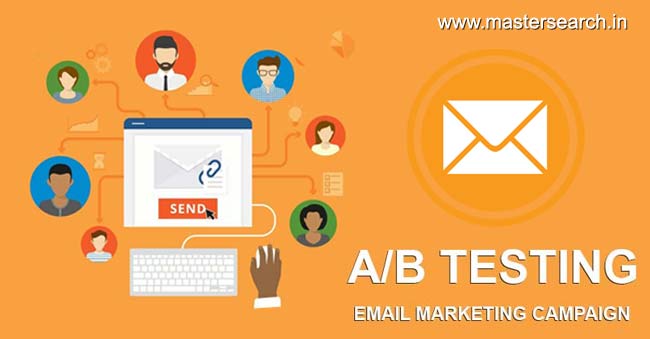A Guide to A/B Testing For Emails, a/b testing email campaigns, A Beginner’s Guide to A/B Testing:
Newsletters are a great way to get in touch with our potentials & existing customers. Email Campaigns enhances the brand loyalty. And the reason for this is, you’re focusing on kind of pre-qualified subscribers as you are sending the newsletter to them who opted for it.
It is very easy to retain the existing customer rather than to get new customers. So, this is the reason that you should go for a A/B testing to experiment with new designs of techniques on your email campaigns. If done in a correct manner, email marketing can help you in converting your potentials into buying customers.
Strategies for A/B testing in email marketing
While setting up an A/B testing campaign the very first step is making a decision on parameters to test. You always want to test many things a time but the best practice is to test only one at a time. You may test the following:
- Subject Line
- Template Designing
- CTA
- Email greeting/covering letter
- Email Headlines
- Body Text
- Closings
- Presence, Number & image positioning
- Specific offers
Each character listed above has effect on the conversion. For example the Subject Line will have an impact on the open rate of the campaign sent; CTA (or Call to Action) will have an impact on the no. of persons that will click through your landing page. The first ever parameter which the customer notice while receiving any email is the title of the email or you can call its as subject line.
The Email Subject line has great impact over success of any email campaign as the number of people who will actually open the email will depend on it. Many people usually decide after reading the email subject whether to open it or send it to trash at once.
So, to start the A/B testing email campaign, you will surely love to optimize the text of the email subject line. When you are going to decide about the A/B testing campaign, first decide the characteristic and then consider the differences.
Always remember if you want to do A/B testing on your whole subscriber list, it will give you more accurate picture of the manner your subscribers respond.
Before sending the A/B testing campaign the first step is to analyze your prior campaign results. You always want higher result than you got earlier.
Tools for A/B Testing
There are number of email marketing management systems available online that are providing tools for A/B testing. Some of these are Campaign Monitor, Active Campaign, Aweber, Mail Chimp, etc. These are the great way to perform the A/B testing for your email campaign. In case, you are going to set up your email campaign for large number of subscribers, you have to buy the subscription for these email marketing tools. But these are the best systems to get the high rate of conversion.
In case, if the email marketing professional do not have the A/B testing tools set up in their email marketing management system, then you do not need to worry as you can manually set up your email A/B testing just by dividing your subscriber list into two segments and then send each version of email to each segment. But here you will have to compare your results manually.
A/B Testing Result Analysis
The parameters for analyzing the results are open rates, click through rates and conversion rates. It is very obvious to have interest in open rates and click rates but why you want to track conversion rate.
Ideally your email shouldn’t affect the conversion rate. If one variation of email gets 10% response and the other 15% then you would expect the second variation also result in 50% more conversion.
It is not always right what we think. That’s why it is very important to check the third parameter so as to prove that the email messaging you are sending is related with your website or not. If the emails are unrelated to the website then it is very often that your visitors may get confused and leave.
Now, it is my firm belief that you can easily carry out an A/B testing email campaign. Now some best practices for email marketing are:
- Simultaneously test email variations to avoid the time based interference.
- Test on a larger subscriber base to get accurate results.
- Test a single variable at one time.
- For faster & easier testing use available tools.
Thankyou for reading to this blog post, would suggest you to read more posts to learn these marketing hacks.

